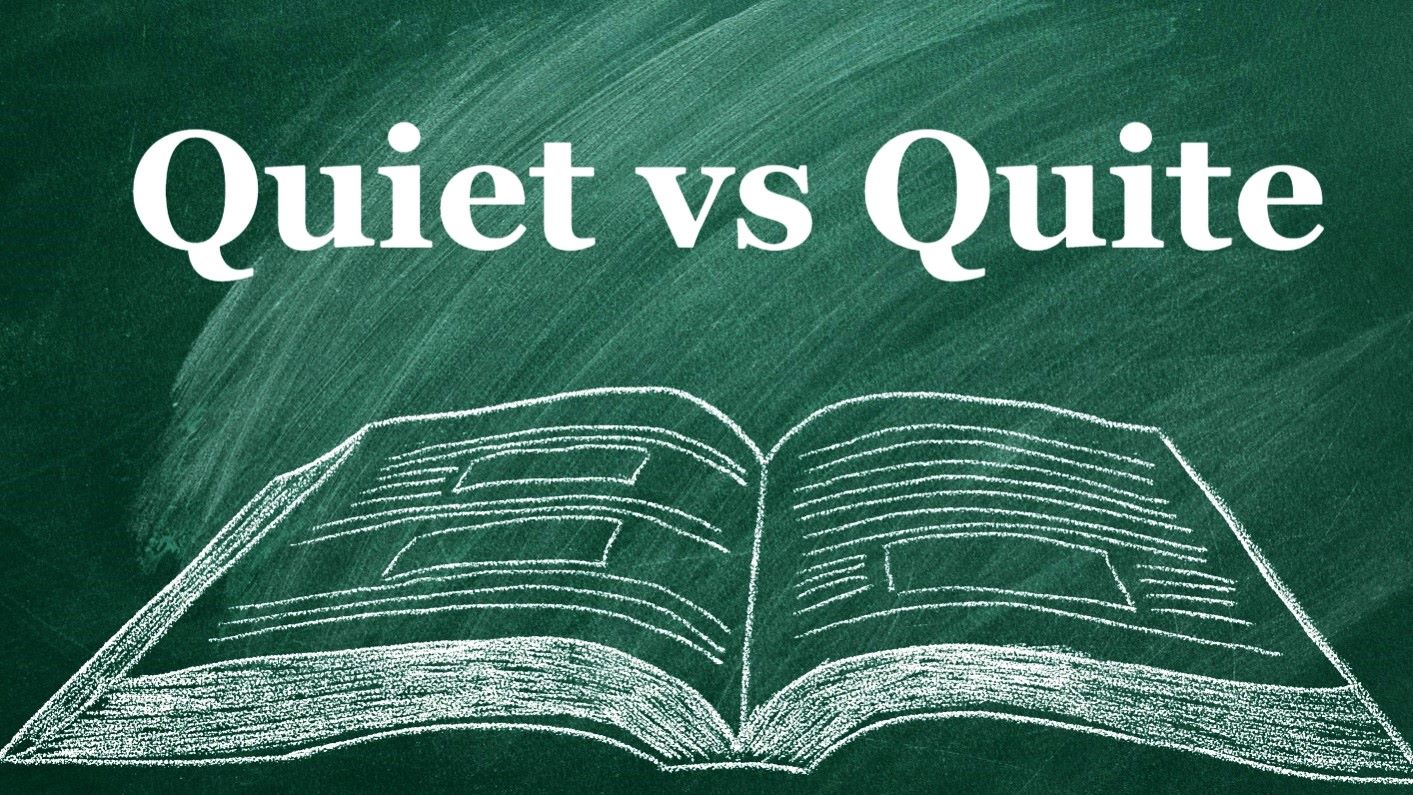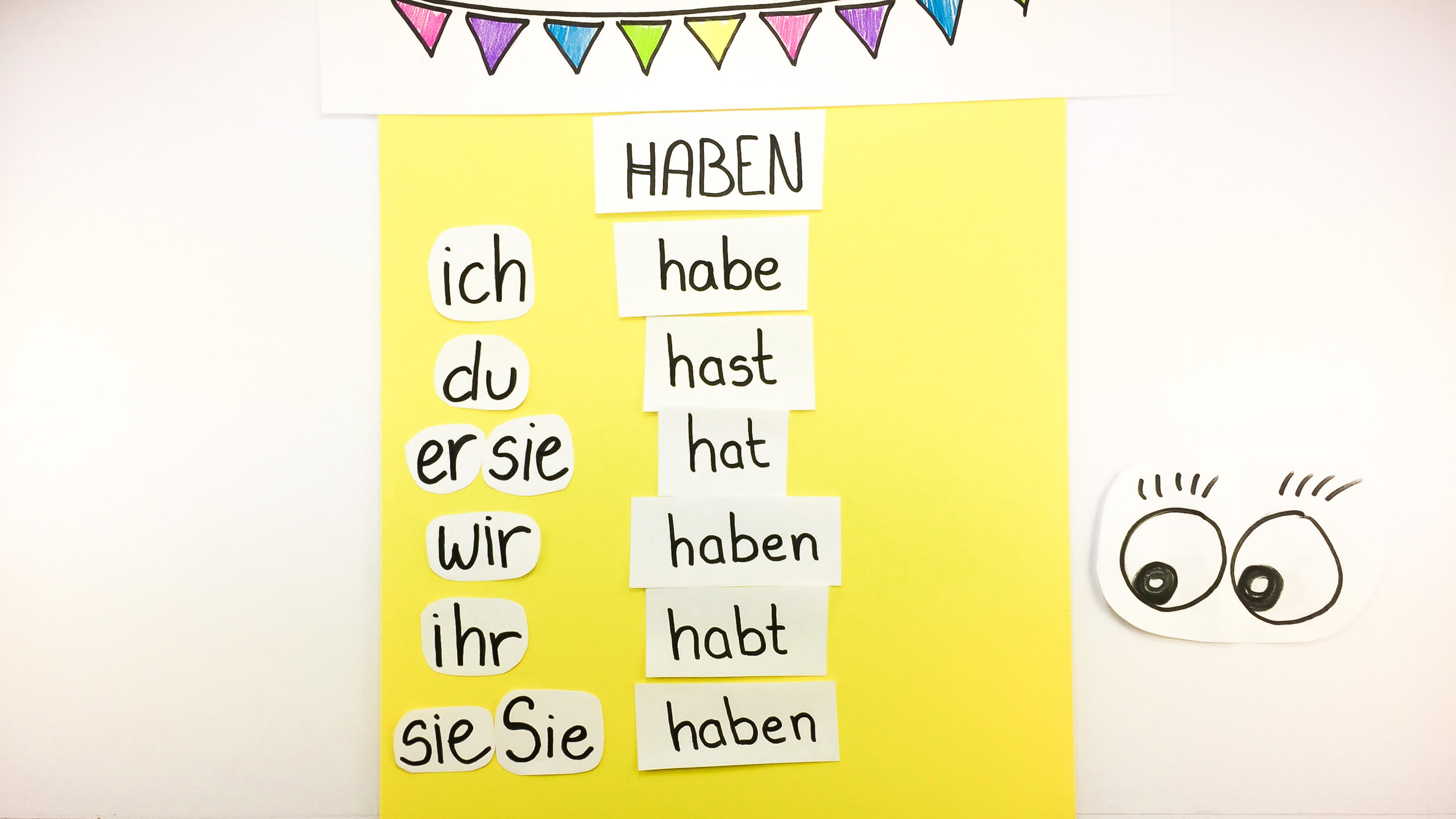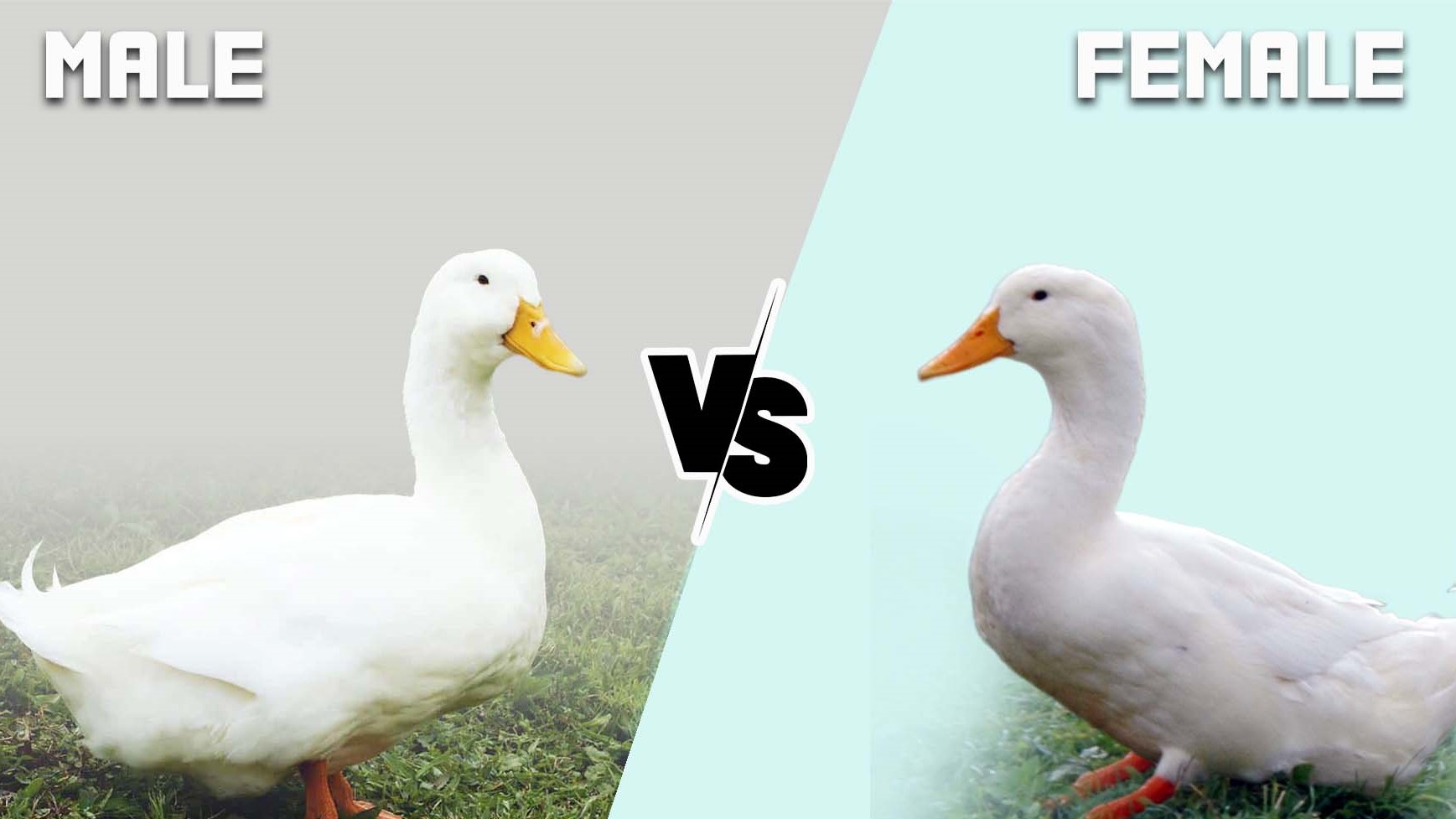Home>Language and Grammar>How To Distinguish Between “Quite” And “Quiet”


Language and Grammar
How To Distinguish Between “Quite” And “Quiet”
Published: February 24, 2024
Learn how to differentiate between "quite" and "quiet" in language and grammar. Enhance your writing skills with this helpful guide. Discover the nuances of language usage.
(Many of the links in this article redirect to a specific reviewed product. Your purchase of these products through affiliate links helps to generate commission for Noodls.com, at no extra cost. Learn more)
Table of Contents
Introduction
Understanding the nuances of language is a fascinating journey that allows us to communicate with precision and clarity. In the English language, words that sound similar can have vastly different meanings, leading to confusion in both spoken and written communication. One such pair of words that often perplex writers and speakers is "quite" and "quiet." Despite their similar pronunciation, these words serve distinct purposes in the English language.
In this article, we will delve into the meanings and usage of "quite" and "quiet," shedding light on their individual roles in sentence construction. By the end of this exploration, you will have a comprehensive understanding of how to differentiate between these two words and use them effectively in your writing and everyday conversations. Let's embark on this linguistic journey to unravel the intricacies of "quite" and "quiet" and gain a deeper appreciation for the richness of the English language.
Read more: How To Activate Quiet Mode On Instagram
Understanding the meanings of "quite" and "quiet"
"Quite" and "quiet" are two words that are often confused due to their similar pronunciation. However, they have distinct meanings and serve different purposes in the English language.
"Quite":
"Quite" is an adverb that is used to intensify the meaning of an adjective or adverb. It denotes a high degree or extent and is often used to emphasize the intensity of a particular quality or action. For example, in the sentence "She is quite intelligent," the word "quite" amplifies the degree of intelligence possessed by the subject. It indicates that the level of intelligence is significant or noteworthy.
"Quiet":
On the other hand, "quiet" is an adjective that describes the absence of noise or disturbance. It refers to a state of calm, tranquility, or low volume. When a place or a person is described as "quiet," it implies that there is minimal or no sound, creating a peaceful atmosphere. For instance, "The library was quiet," portrays a setting with minimal noise, conducive to focused study or reading.
Differentiating the meanings:
To differentiate between these two words, it is essential to remember that "quite" emphasizes the degree or extent of a quality, while "quiet" describes the absence of noise or a peaceful state. Understanding their distinct meanings is crucial for using them accurately in sentences and avoiding confusion in communication.
By grasping the nuances of "quite" and "quiet," individuals can effectively convey their intended messages, whether in written compositions or verbal interactions. This understanding empowers individuals to articulate their thoughts with precision, contributing to clear and effective communication.
In the subsequent sections, we will explore the usage of "quite" and "quiet" in sentences, providing examples to illustrate their application in various contexts. This exploration will further solidify our comprehension of these two words and equip us with the knowledge to use them appropriately in different scenarios.
Usage of "quite" in sentences
"Quite" is a versatile adverb that adds emphasis or amplifies the meaning of an adjective or adverb in a sentence. Its usage can vary based on the context, and understanding its application is crucial for effective communication.
Emphasizing a Quality or Degree
When used in sentences, "quite" serves to emphasize the degree or extent of a particular quality. For example, consider the sentence, "The movie was quite entertaining." Here, "quite" amplifies the level of entertainment provided by the movie, indicating that it was notably enjoyable or engaging. Similarly, in the sentence, "She is quite talented," the adverb "quite" underscores the high degree of talent possessed by the individual, highlighting her exceptional abilities.
Expressing Agreement or Certainty
"Quite" can also convey a sense of agreement or certainty in a statement. For instance, in the sentence, "It's quite clear that she will succeed," the adverb "quite" signifies a high level of clarity and certainty regarding the individual's success. It reinforces the conviction of the speaker, indicating a strong belief in the predicted outcome.
Softening Statements
In some cases, "quite" is used to soften the impact of a statement, especially when expressing criticism or negative observations. For example, in the sentence, "The presentation was quite lengthy," the adverb "quite" mitigates the negative connotation associated with the duration of the presentation, implying that it was somewhat extended but not excessively so. This usage allows for a more diplomatic expression of feedback or criticism.
Introducing a Contrasting Element
"Quite" can also introduce a contrasting element in a sentence, highlighting a surprising or unexpected quality. For instance, consider the sentence, "She appeared calm, but she was quite anxious." Here, the adverb "quite" juxtaposes the outward appearance of calmness with the internal state of anxiety, emphasizing the unexpected intensity of her emotions.
Enhancing Descriptions
When used in descriptive writing, "quite" enhances the vividness and specificity of descriptions. For example, in the sentence, "The garden was quite breathtaking," the adverb "quite" elevates the impact of the description, portraying the garden as exceptionally stunning and awe-inspiring.
Incorporating "quite" effectively in sentences allows for nuanced expression and precise communication, enriching the overall quality of written and spoken language. By mastering its usage, individuals can convey their intended meanings with clarity and emphasis, contributing to compelling and articulate communication.
Usage of "quiet" in sentences
"Quiet" serves as an adjective that conveys the absence of noise or disturbance, depicting a state of calm, tranquility, or low volume. Its usage in sentences allows for the portrayal of serene environments, peaceful atmospheres, and subdued sound levels.
Describing Environments and Settings
In descriptive writing, "quiet" is employed to depict the characteristics of various environments. For instance, consider the sentence, "The forest was quiet as the sun began to set." Here, the adjective "quiet" paints a picture of a tranquil forest with minimal sound, evoking a sense of serenity and stillness. Similarly, in the sentence, "The quaint village was quiet in the early hours of the morning," the word "quiet" captures the peaceful ambiance of the village during the early hours, emphasizing the absence of commotion or loud noises.
Portraying Calm and Serenity
"Quiet" is often used to convey a sense of calm and serenity in both physical spaces and individuals. For example, in the sentence, "The library was quiet, allowing for focused study and contemplation," the adjective "quiet" highlights the conducive atmosphere for concentrated academic pursuits. It signifies a lack of disruptive noise, enabling individuals to engage in quiet activities such as reading and studying. Additionally, in the sentence, "She spoke in a quiet voice, exuding a sense of tranquility," the word "quiet" characterizes the gentle and peaceful manner in which the individual communicates, reflecting a serene and composed demeanor.
Expressing Restraint or Subdued Activity
"Quiet" can also denote restrained or subdued activity, particularly in social or behavioral contexts. For instance, in the sentence, "The children played quietly in the backyard," the adjective "quietly" describes the manner in which the children engaged in play, indicating a lack of boisterous behavior. It suggests a controlled and peaceful play environment, devoid of excessive noise or rowdiness.
Conveying Emotional States
Beyond physical environments, "quiet" is utilized to convey emotional states and internal tranquility. For example, in the sentence, "Amid the chaos, she found a quiet moment of reflection," the word "quiet" symbolizes a peaceful and introspective moment amidst turbulent surroundings. It signifies a mental state of calm and contemplation, offering a respite from external disturbances.
Creating Atmosphere and Mood
In literature and creative writing, "quiet" contributes to the establishment of atmosphere and mood. For instance, in the sentence, "The quiet evening enveloped the town in a sense of tranquility," the adjective "quiet" sets the tone for a serene and peaceful evening, fostering a mood of calmness and relaxation.
Incorporating "quiet" into sentences enables writers to evoke specific atmospheres, depict tranquil scenes, and convey a sense of calm and stillness. By utilizing this adjective effectively, individuals can craft vivid and immersive descriptions, enriching their writing with nuanced portrayals of peaceful environments and subdued activities.
Examples of common mistakes and how to avoid them
Mistakes involving the usage of "quite" and "quiet" often stem from their similar pronunciation and the subtle nuances of their meanings. Understanding these common errors and learning how to avoid them is essential for honing one's language skills and ensuring clear and accurate communication.
Common Mistake 1: Confusing "Quite" with "Quiet"
Incorrect Usage: "The restaurant was quite, creating a peaceful ambiance."
Correction: "The restaurant was quiet, creating a peaceful ambiance."
Explanation: In this example, the incorrect use of "quite" instead of "quiet" leads to a misrepresentation of the intended meaning. "Quiet" is the appropriate word to describe the absence of noise in the restaurant, while "quite" would emphasize the degree of a quality, not the absence of sound.
Common Mistake 2: Misplacing "Quite" in a Sentence
Incorrect Usage: "She quite enjoyed the concert."
Correction: "She enjoyed the concert quite a lot."
Explanation: Placing "quite" before the verb in this sentence results in awkward phrasing. To convey the intended emphasis on the degree of enjoyment, it is more effective to position "quite" before the adverb "a lot," creating a smoother and more natural sentence structure.
Common Mistake 3: Overusing "Quiet" in Descriptions
Incorrect Usage: "The quiet library was a peaceful place to study quietly."
Correction: "The tranquil library was a peaceful place to study quietly."
Explanation: In this instance, the repetitive use of "quiet" detracts from the descriptive quality of the sentence. By replacing one instance of "quiet" with a synonym such as "tranquil," the sentence becomes more varied and engaging, enhancing the overall expression.
Common Mistake 4: Using "Quite" as a Filler Word
Incorrect Usage: "The movie was quite, interestingly, entertaining."
Correction: "The movie was, quite interestingly, entertaining."
Explanation: Placing "quite" as a standalone word without a specific purpose or emphasis can lead to awkward phrasing. By repositioning "quite" within the sentence and pairing it with "interestingly," the intended emphasis on the intriguing nature of the movie is conveyed more effectively.
Common Mistake 5: Neglecting Contextual Appropriateness
Incorrect Usage: "She whispered quite in the library."
Correction: "She whispered quietly in the library."
Explanation: In this example, the inappropriate use of "quite" in the context of whispering detracts from the accurate portrayal of the action. "Quietly" aligns with the expected behavior in a library setting, conveying the subdued manner of speaking more effectively.
By recognizing these common mistakes and understanding how to avoid them, individuals can refine their language proficiency and elevate the precision of their communication. Embracing these insights equips writers and speakers with the tools to navigate the intricacies of "quite" and "quiet" with confidence, ultimately enhancing the clarity and impact of their expressions.
Conclusion
In conclusion, the distinction between "quite" and "quiet" lies at the heart of effective communication and linguistic precision. By unraveling the unique roles of these words, individuals can harness their power to convey nuanced meanings, emphasize qualities, and depict serene environments with clarity and finesse.
Understanding the adverb "quite" as a tool for intensifying the degree or extent of a quality empowers writers and speakers to infuse their expressions with emphasis and precision. Whether it involves amplifying the entertainment value of a movie, expressing certainty, softening critiques, or introducing contrasting elements, the strategic use of "quite" enriches language with depth and vividness. By mastering its application, individuals can elevate the impact of their descriptions and assertions, fostering engaging and articulate communication.
On the other hand, the adjective "quiet" serves as a gateway to portraying tranquility, calmness, and subdued activity. Its adept usage enables writers to craft vivid depictions of peaceful environments, serene emotional states, and restrained behaviors. By leveraging the descriptive prowess of "quiet," individuals can evoke specific atmospheres, convey emotional nuances, and paint immersive scenes that resonate with readers and listeners, enhancing the evocative power of their narratives.
Moreover, by recognizing and addressing common mistakes related to "quite" and "quiet," individuals can refine their language proficiency and avoid misrepresentations in their expressions. Embracing the nuances of these words and learning how to navigate their usage with precision equips writers and speakers with the tools to communicate with clarity, impact, and authenticity.
In essence, the mastery of "quite" and "quiet" empowers individuals to wield language with finesse, infusing their expressions with depth, clarity, and evocative imagery. As we continue to navigate the rich tapestry of the English language, embracing the distinct roles of "quite" and "quiet" enhances our ability to articulate thoughts, convey emotions, and craft compelling narratives, ultimately enriching the fabric of human communication.










